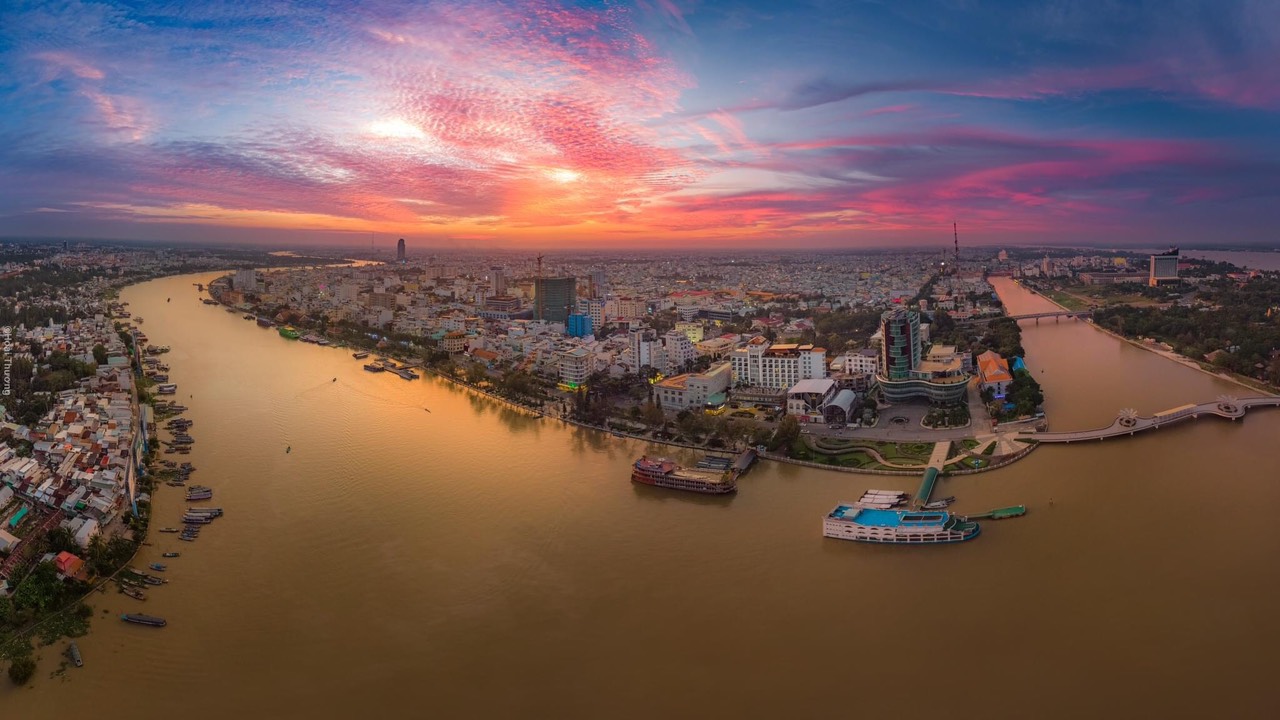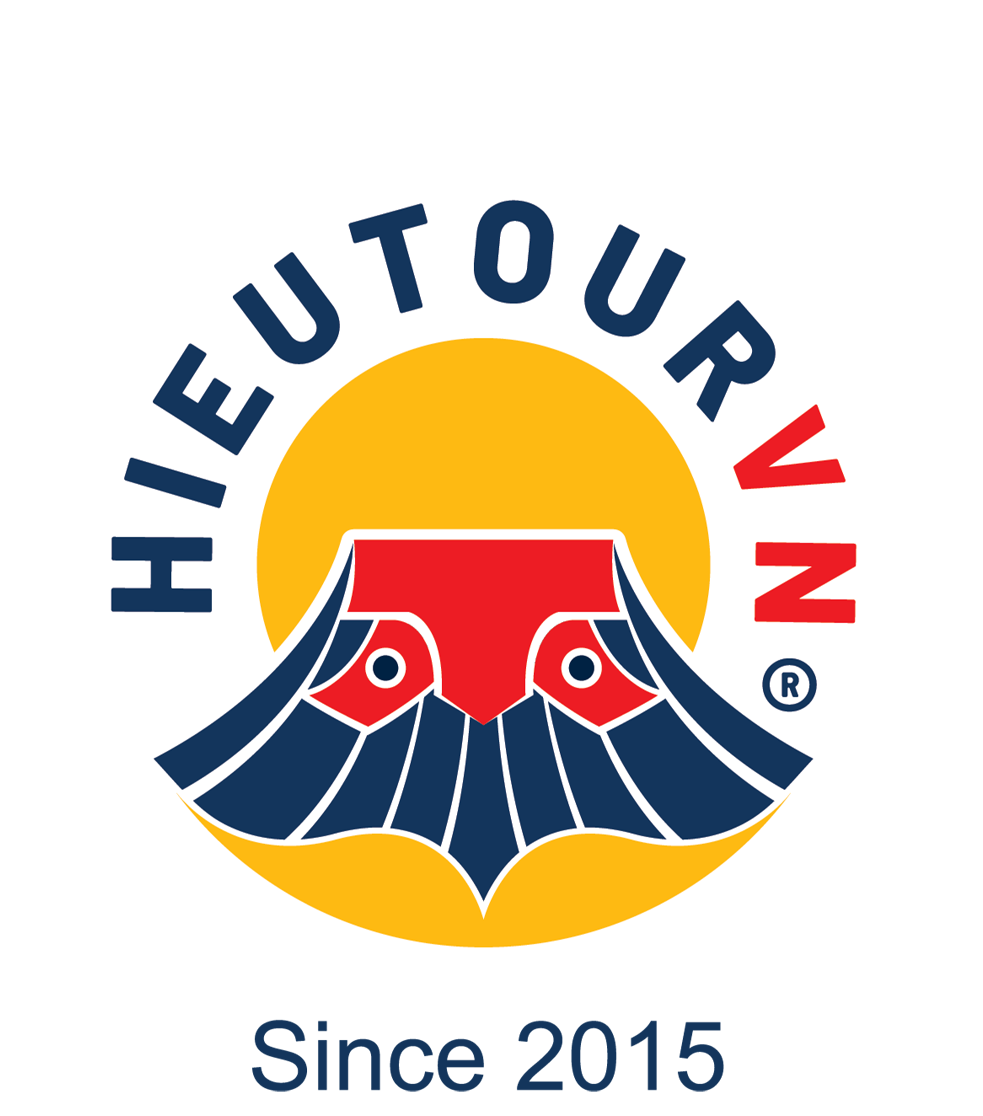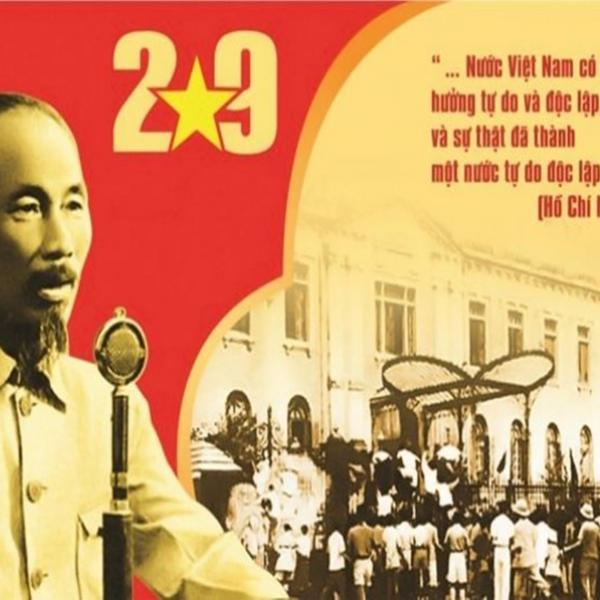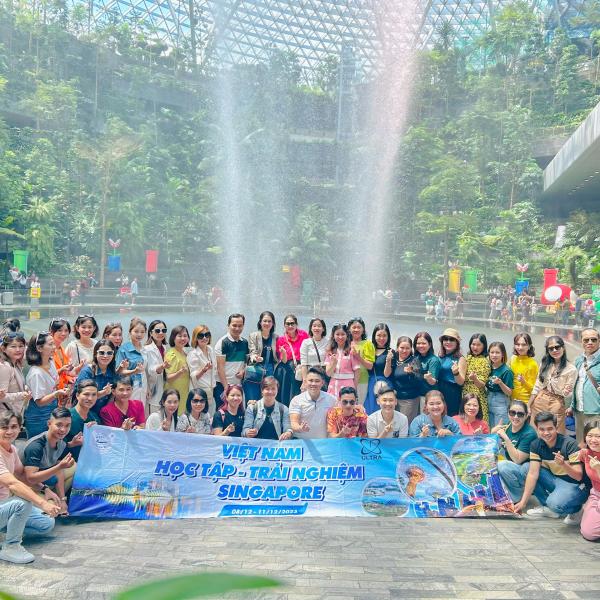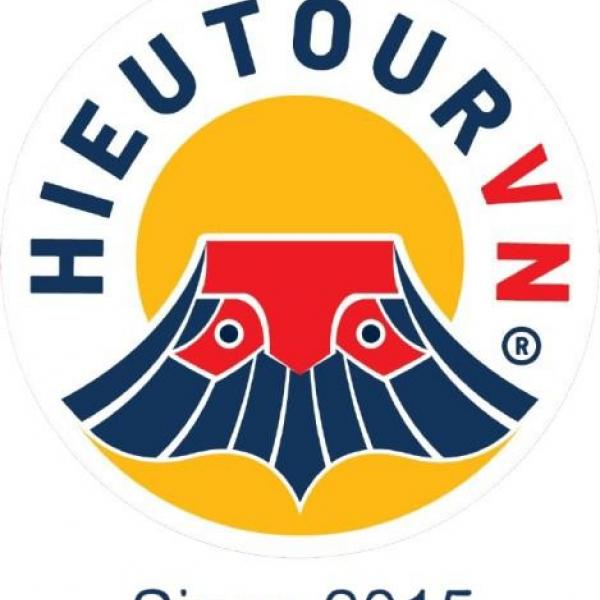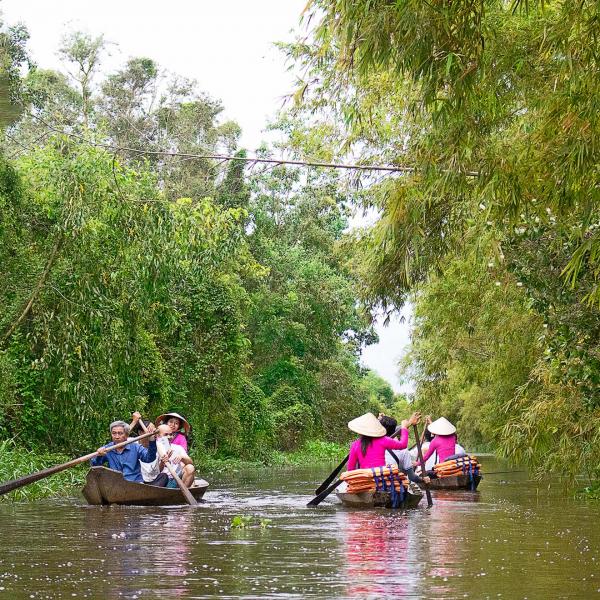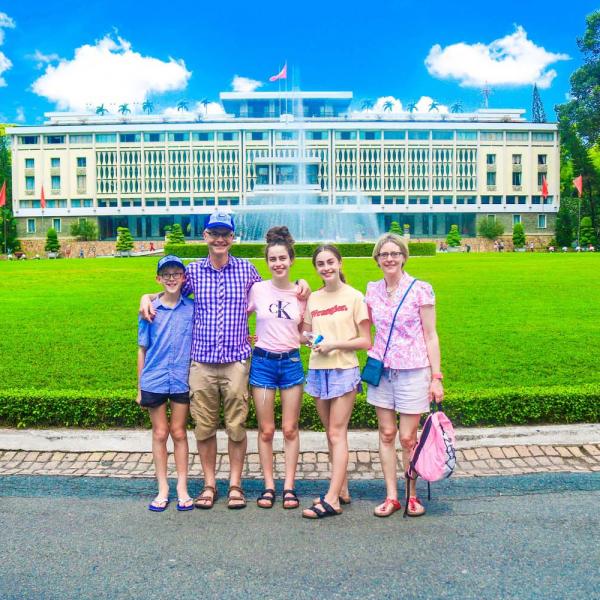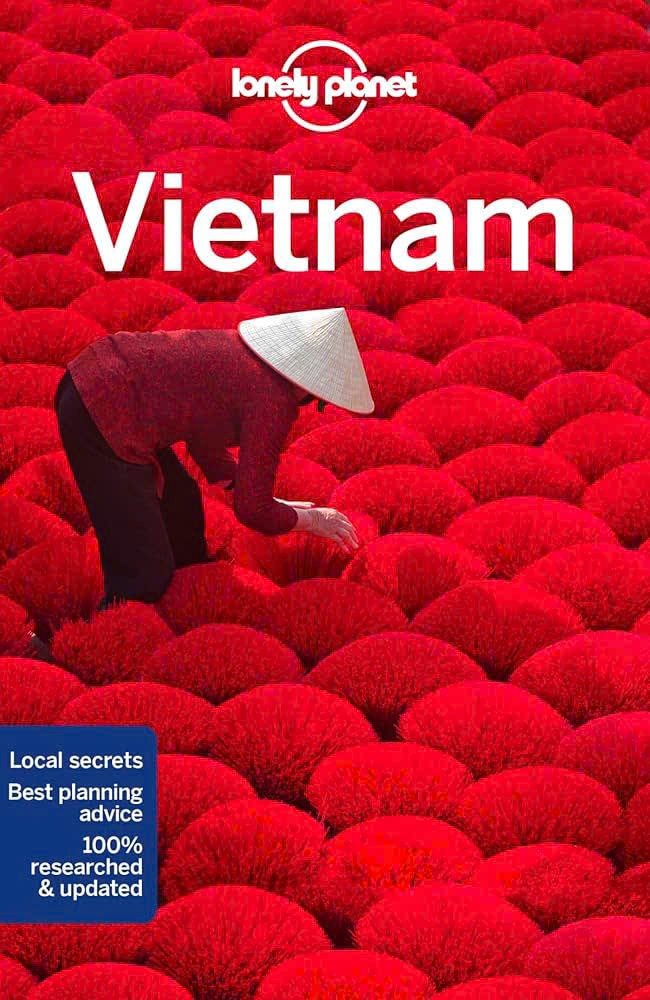Planning a trip to Can Tho? Discover the city’s top experiences with our curated guide to the best things to do in Can Tho city. Start your day aboard a Can Tho cruising to the Cai Rang floating market for a sunrise breakfast, then step into history at the Bình Thủy Ancient House. Experience authentic community life on Cồn Sơn Islet and taste local specialties along De Tham Food Street including Bánh cống Cô Út, Cam Ky chicken rice and vegetarian dishes at Bach Thao. Venture further on a rural cycling tour in Phong Điền, shop at bustling markets like An Lạc and Cái Khế, and visit a traditional charcoal‑making village that’s sustained generations. Don’t miss meeting the “Toy‑Man,” an artisan who crafts toys from recycled cans. End your day by the lakeside at Xang Thoi Lake perfect for a sundowner beer or coffee while watching local life. Whether you’re searching for Can Tho city attractions, unique Can Tho food or memorable Can Tho cruising, our guide brings together all the must‑see highlights of Vietnam’s Mekong Delta capital.
9 amazing things to do in Can Tho
1. Wake early for the Cai Rang floating market
No trip to Can Tho is complete without visiting its morning floating market. At dawn dozens of boats congregate on the Hau River to sell fruit, vegetables and breakfast items. Travelers can see local families living on their vessels, many of whom rarely set foot on land. Vendors sell everything from pineapples and mangos to iced coffee and bowls of hot noodle soup; visitors pull their boat alongside a vendor’s and enjoy breakfast right on the river. The market, recognized as an important cultural site and once named the world’s most impressive market by Rough Guide, offers an authentic glimpse into Mekong river life. Tours often combine a visit here with countryside cycling, making it one of the top choices for Can Tho tours and Can Tho river tours.
.jpg)
Cai Rang Floating Market - Can Tho city
2. Step back in time at Bình Thủy Ancient House
Built in 1870 by the wealthy Duong family, Bình Thủy Ancient House has stood for more than 150 years. Its architecture blends French colonial elegance with traditional Vietnamese design high foundations protect the house from flooding, the roof features curved tiles, and the façade has an open European‑style porch accented with ironwork and stained glass. Inside, visitors find intricately carved ancestor altars, European furniture imported from France, porcelain collections and vintage photos. Used as a filming location for the French film The Lover, this well‑preserved mansion is a highlight of many Mekong Delta tours.
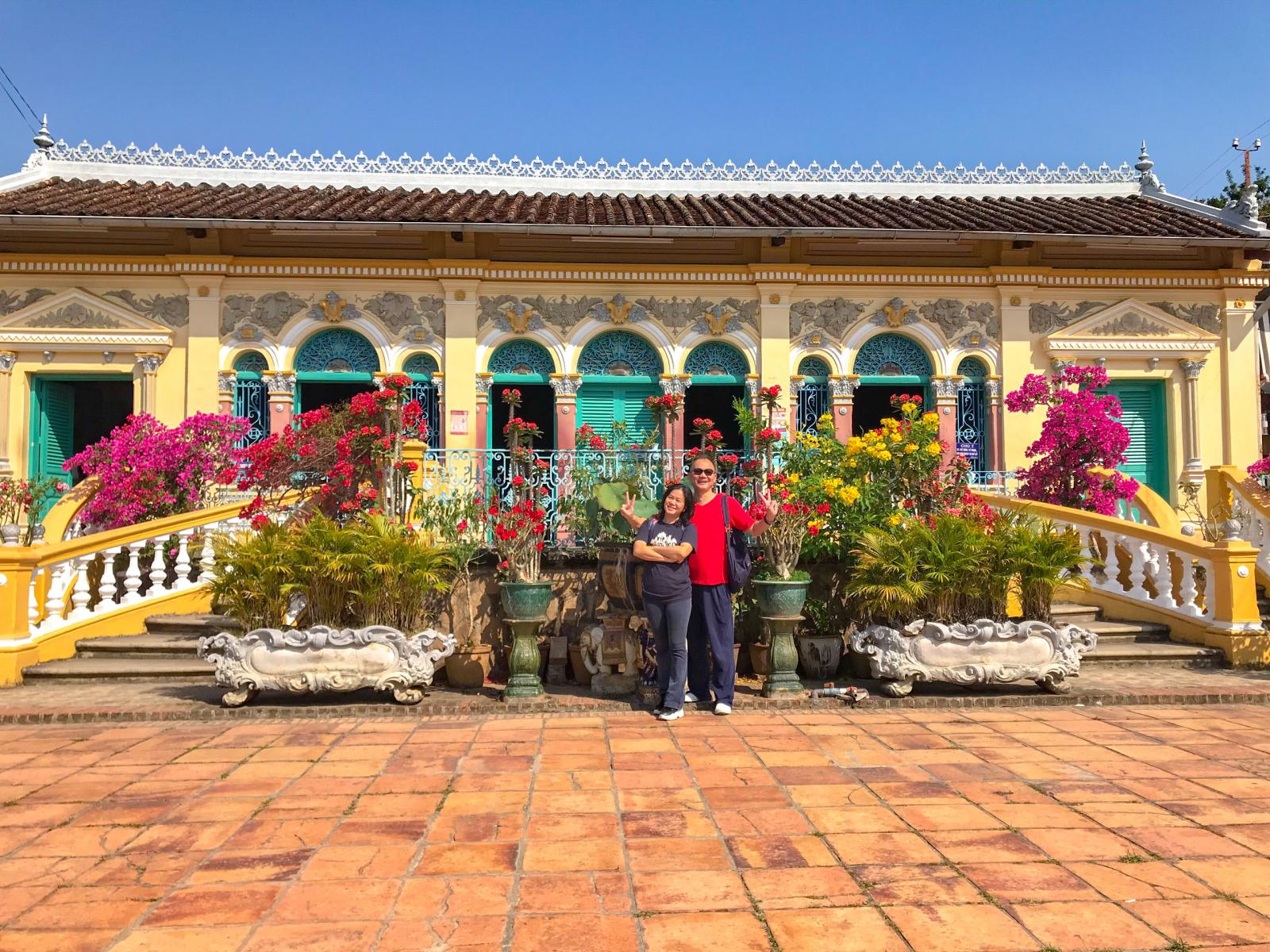 Binh Thuy Ancient House - Can Tho city
Binh Thuy Ancient House - Can Tho city
3. Experience community tourism on Cồn Sơn (Son Islet)
Just a kilometer off the mainland, Cồn Sơn is a small island where community‑based tourism has transformed a once‑poor area. Villagers open their homes to visitors and guide them through traditional activities: rowing wooden boats through floating fish farms, learning to make local cakes, feeding jumping snakehead fish, wandering through fruit orchards and cooking rustic dishes. Tourism here focuses on preserving culture and the environment rather than profit. Residents restrict plastic waste and organize regular clean‑ups to keep the island pristine. This emphasis on sustainability and hospitality embodies the Mekong smiles that make travelers fall in love with the delta.
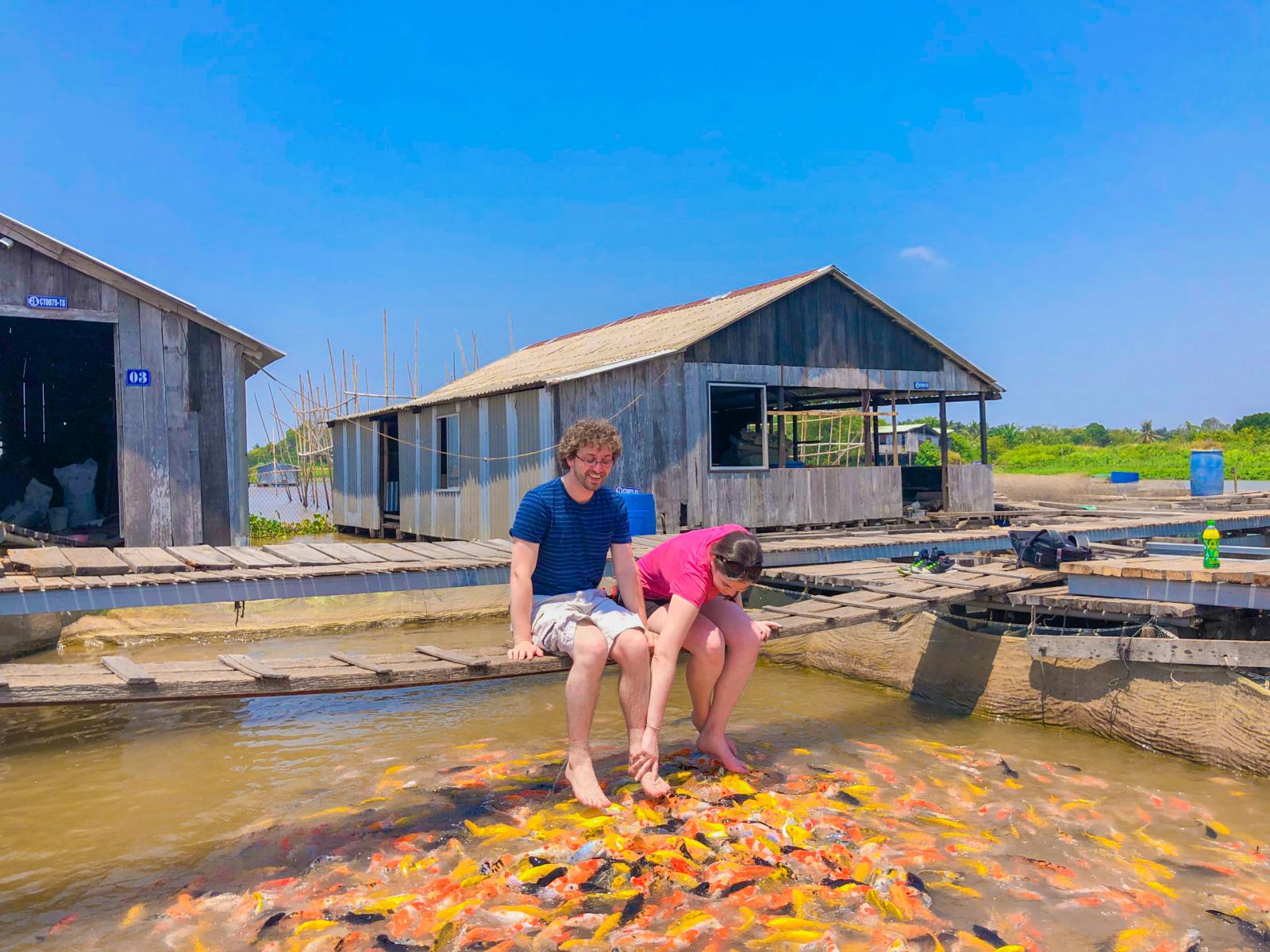 Con Son Islet - Tourism Community - Can Tho city
Con Son Islet - Tourism Community - Can Tho city
4. Sample local flavors on Đề Thám Food Street
De Tham Food Street – a culinary playground
Located near the city centre, De Tham Street has earned the nickname “food street” thanks to its incredible variety of Mekong dishes. Visitors can sample everything from noodle soups to fried cakes in one short stroll:
Bánh cống at Cô Út – Cong cakes are deep‑fried savoury cakes made from rice flour, mung beans, minced pork and shrimp. According to most of local Can Tho and Mekong Delta citizen of Vietnam, the best places to try them are on De Tham and Lý Tự Trọng streets, and locals specifically recommend the Bánh cống Cô Út stall. This family‑run eatery started out as a tiny shop near the power company; by sticking to the traditional recipe and carefully selecting ingredients, its cakes remain crisp and fluffy.
Cam Ky chicken rice – A Malaysian travel feature suggests stopping at De Tham for Com ga Cam Ky (steamed chicken rice). The Cam Ky restaurant serves Hainanese‑style steamed chicken over fragrant rice alongside soy‑braised pork and roast chicken, bringing a hint of Chinese influence to the street.
Bach Thao vegetarian restaurant – At 86A De Tham you’ll find Bach Thao, one of the city’s most popular vegetarian restaurants. The dining room is spacious and decorated with Buddhist calligraphy and messages about plant‑based living. Bach Thao’s menu is both extensive and thoughtfully curated; ingredients are selected with care and dishes change regularly so diners never get bored. Signature choices include bun mang chay (bamboo shoot noodle soup), bun Thai chay (Thai‑style vegetarian noodles), Korean kimchi hot pot and mushroom hot pot; prices range from 15,000 VND for individual dishes to 50,000 –120,000 VND for hot pots.
You can also slurp a bowl of Bún Nước Lèo a Soc Trang‑style noodle soup made from fish stock, fermented fish and herbs at number 12 De Tham, or tuck into crispy bánh xèo (savory pancakes filled with shrimp and pork) at number 34. Numerous stalls serve grilled seafood, mango salad, stir‑fried corn, rice‑paper rolls and bánh cống, making this street a favorite stop on many Can Tho tours.
Tip for sunset: At the end of De Tham Street lies Xang Thoi Lake, a freshwater lake wrapped by cafés and small eateries. We recommend catching the sunset here and choosing a coffee spot overlooking the water, the tranquil setting lets you enjoy a drink while observing local life. If you’d prefer a cold beer or a Vietnamese iced coffee with milk while watching people stroll and exercise around the lake, this relaxed lakeside area is a great place to unwind after your culinary adventures on De Tham Street.
 Banh Cong (Cong Cake) Cô Út - Đề Thám Street - Can Tho city
Banh Cong (Cong Cake) Cô Út - Đề Thám Street - Can Tho city
5. Cycle through rural Phong Điền
Phong Điền district lies about 17 km south of Can Tho city. After visiting the small Phong Điền floating market, travelers can explore its shady lanes and canals by sampan or bicycle. Free bike tours cover roughly 19 km and depart in the afternoon, giving visitors time to pedal past rice paddies, tropical orchards and bamboo bridges. Guided rural tours also include a stop at Phong Dien market followed by cycling through local villages, where travelers play with friendly families, sip coconut water and share smiles. These half‑day excursions include breakfast, fruit, coffee, bicycles and an English‑speaking guide and offer an intimate look at delta life beyond the city.
 Can Tho Rural Cycling Tour - Can Tho city
Can Tho Rural Cycling Tour - Can Tho city
6. Browse the bustling An Lạc Market (Chợ Sắt)
An Lạc Market also called Chợ Sắt (Iron Market) is a small but lively marketplace in the Ninh Kiều district. Vendors here sell fresh produce, tropical fruits, meat, fish and household goods, making it an essential hub for local residents. Open daily from 5 a.m. to 7 p.m. and located on Điện Biên Phủ Street, it is a great place to experience everyday commerce and pick up ingredients for cooking.
7. Explore the large Cái Khế Market
Cái Khế Market is one of Can Tho’s largest wholesale and retail centers. Divided into three areas food, clothing and footwear it opens at 4 a.m. and operates until 6 p.m. Visitors can wander through aisles of fresh fish, meat and vegetables, then browse stalls selling shirts, shoes and accessories at reasonable prices. Its scale and variety make Cái Khế a must‑see for shoppers and a common stop on Can Tho tours.
8. Witness a traditional charcoal‑making village
About 45 km from Can Tho, in Tân Thạnh commune of Ngã Bảy city (Hậu Giang province), lies a community where families have been making charcoal for more than 50. Elderly kiln owner Đinh Văn Biết recalls learning the craft in the 1970s, when locals switched from subsistence rice farming to charcoal making along the Cái Côn River. Today he operates nine kilns that each hold up to 100 bundles of firewood; four kilns can produce over 20 tons of charcoal per month. The shift to charcoal production transformed the village: families built larger houses, educated their children and purchased land and vehicles. According to provincial statistics, Hậu Giang has 384 households engaged in charcoal production, operating 1,281 kilns, of which Châu Thành district has 916 and Ngã Bảy city 365. Visitors who make the trip can see these dome‑shaped kilns smoldering quietly and learn how the craft has sustained generations.
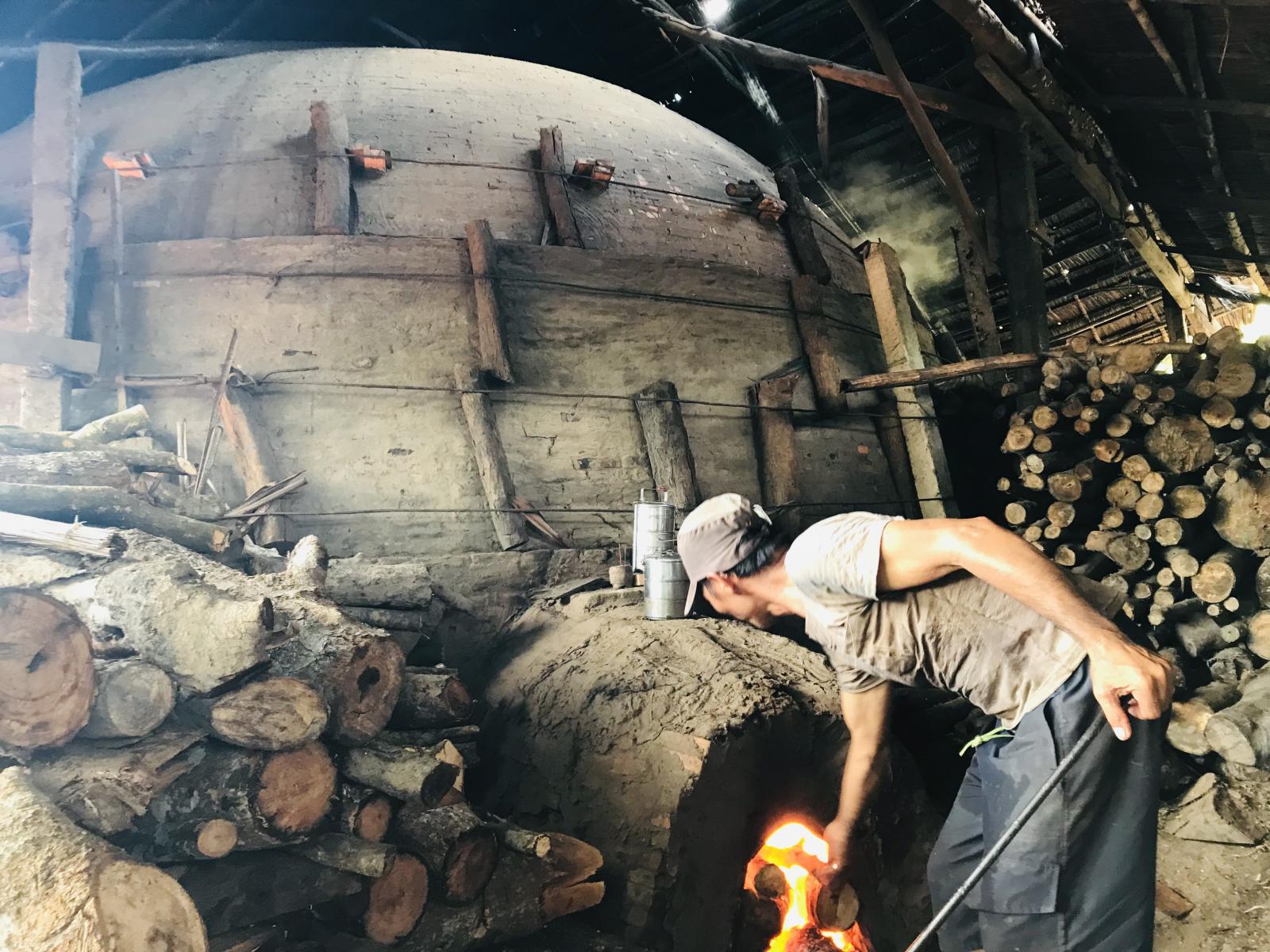 Charcoal-making village - Can Tho city
Charcoal-making village - Can Tho city
9. Meet the “Toy‑Man” and his recycled creations
Hidden in an alley near Can Tho’s Old Market is the workshop of a local artisan affectionately called the Toy‑Man. Using recycled soda and beer cans, simple hand tools and an imaginative spirit, he crafts miniature MIG‑21 jet fighters, Apache helicopters, cars, trucks and even hats. What began as a childhood fascination has become a lifelong commitment to creativity and sustainability; his open‑air workshop now symbolizes environmental consciousness in the Mekong. Visitors can observe his process, hear his stories and appreciate how art and environmental care merge in these humble toys. This heart‑warming stop reflects the ethos of responsible tourism and leaves travelers smiling.
